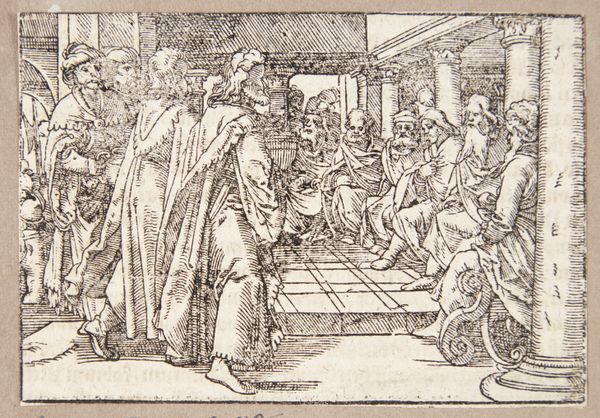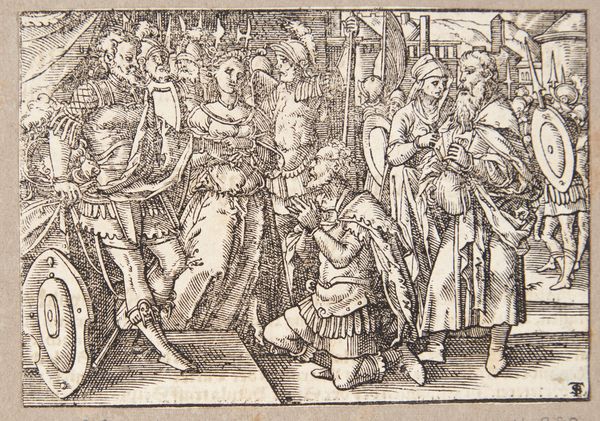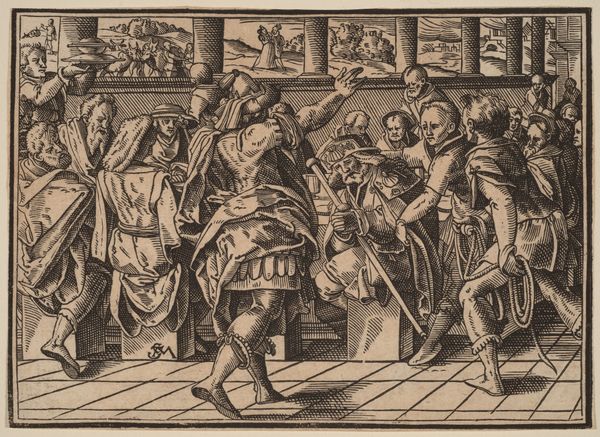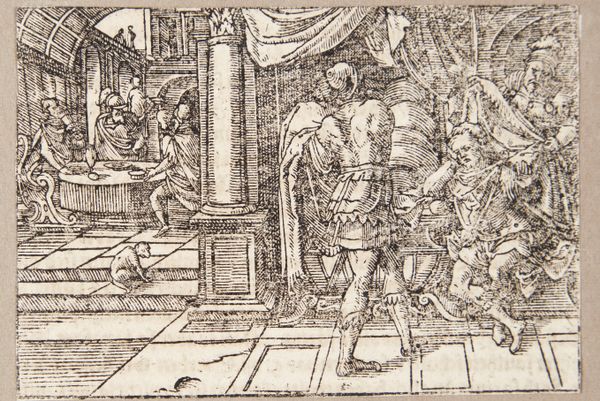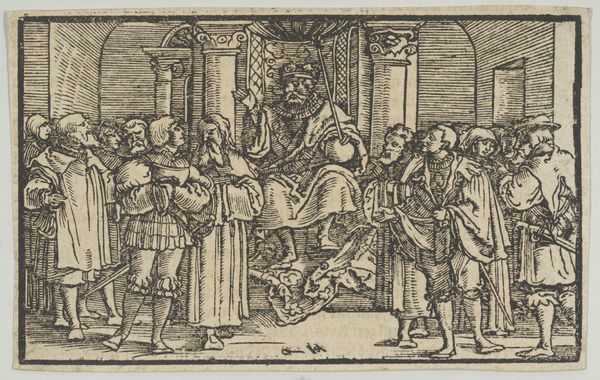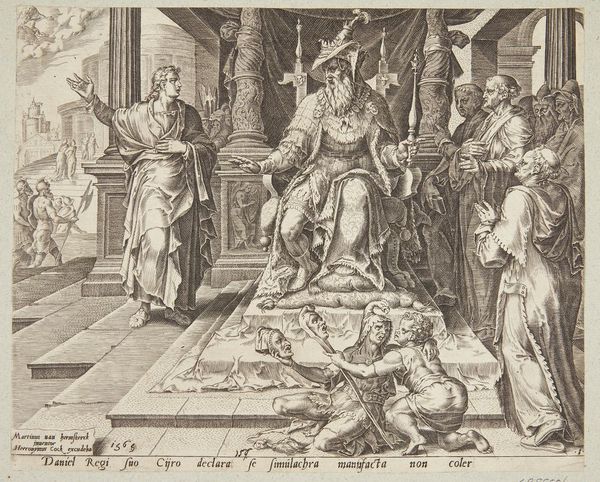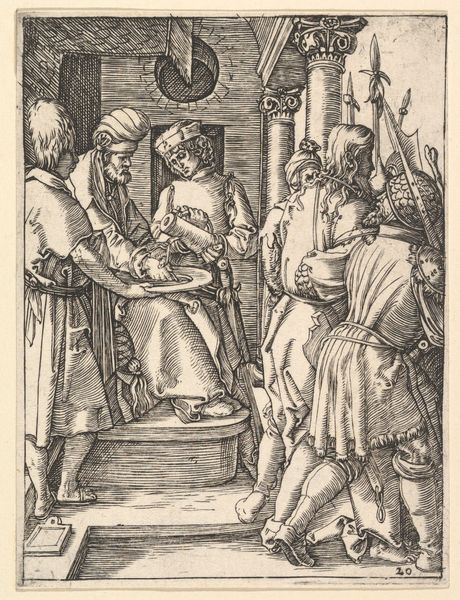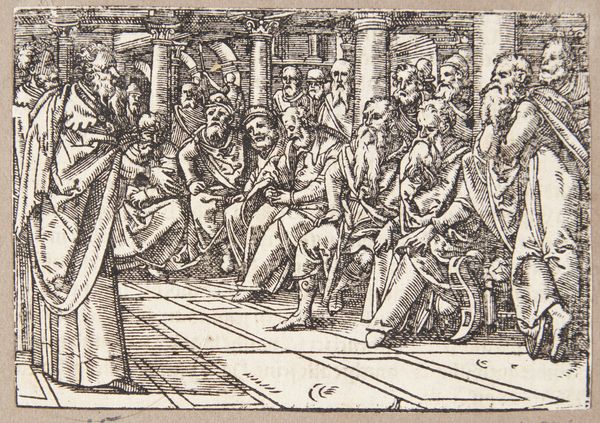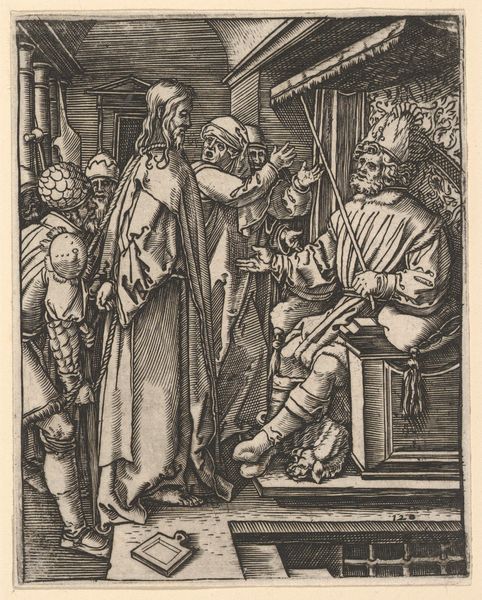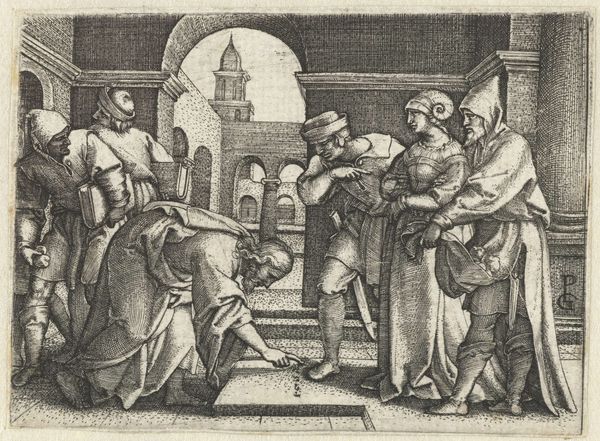
print, woodcut
#
narrative-art
# print
#
figuration
#
11_renaissance
#
woodcut
#
history-painting
#
northern-renaissance
Dimensions: 75 mm (height) x 105 mm (width) (bladmaal)
Curator: This is Tobias Stimmer's "The Roman Ambassadors Return from Carthage," a woodcut created in 1574. Editor: It strikes me as a highly formal, even theatrical scene, almost stage-like in its composition. The stark black and white amplifies that sense of drama. Curator: Indeed, Stimmer's piece would have circulated widely, not as a luxury object but as a vehicle for disseminating historical and political ideas. The choice of subject – ambassadors returning from a mission – emphasizes diplomacy, a theme with considerable resonance during the Renaissance, when international relations were shifting dramatically. Editor: Looking at the print's materiality, you notice how the linear quality inherent in the woodcut medium impacts its meaning. Stimmer masterfully employs line to describe textures, to create shadows, and even to define the emotional states of his figures. See the meticulous rendering of fabric. Curator: Absolutely. Also observe the figures. Notice how the artist differentiates their dress and adornments to highlight status. And consider how this image might have served as a visual lesson in governance, portraying an ideal of civic order, to sixteenth century viewers. Editor: While there’s a wealth of figures and detail, the composition directs your eyes so firmly. The orthogonal lines converge to that far point, and it is striking how effectively Stimmer creates spatial depth given the nature of the woodcut medium. Curator: I agree, and it speaks to his artistic skill within the conventions and constraints of printmaking at the time. His choice to depict a scene of ambassadors returning underscores the Republic's reliance on negotiation and diplomacy for its success. Consider the messages this print may have transmitted concerning the need to assert political authority during a time of both internal unrest and emerging external threats in sixteenth century Europe. Editor: Looking at the final impression, it appears somewhat flattened due to its medium but maintains clear geometric precision through perspective, directing us through both political messaging and visual appeal. Curator: It offers insight into not only artistic practices, but also Renaissance politics and its visual strategies. Editor: Indeed. It reveals how aesthetic and social-historical concerns mutually reinforce each other, demonstrating how attention to the art object helps clarify these intertwined ideas.
Comments
No comments
Be the first to comment and join the conversation on the ultimate creative platform.
